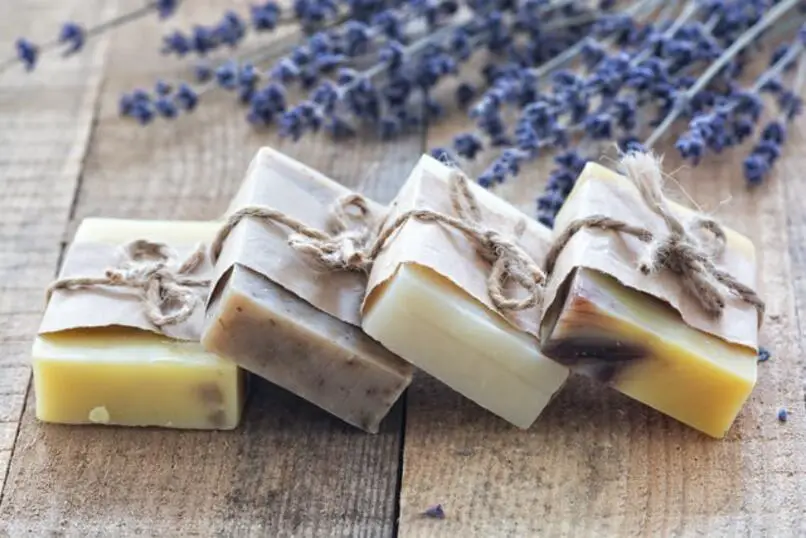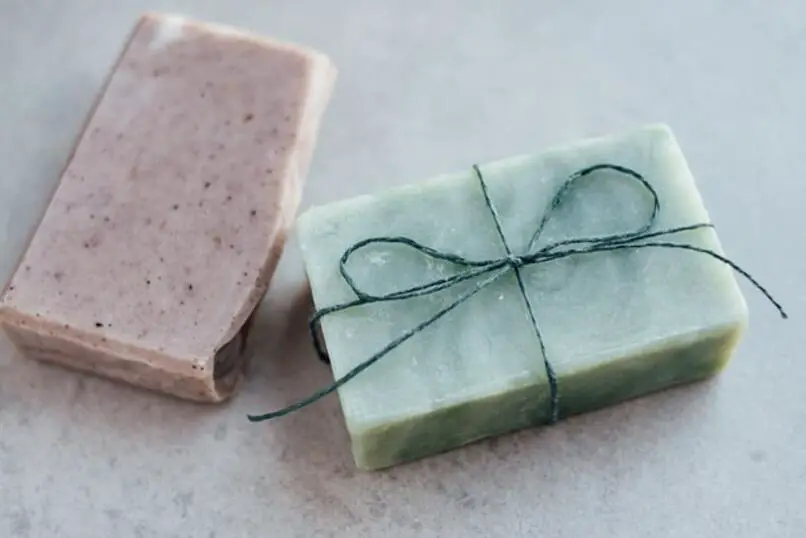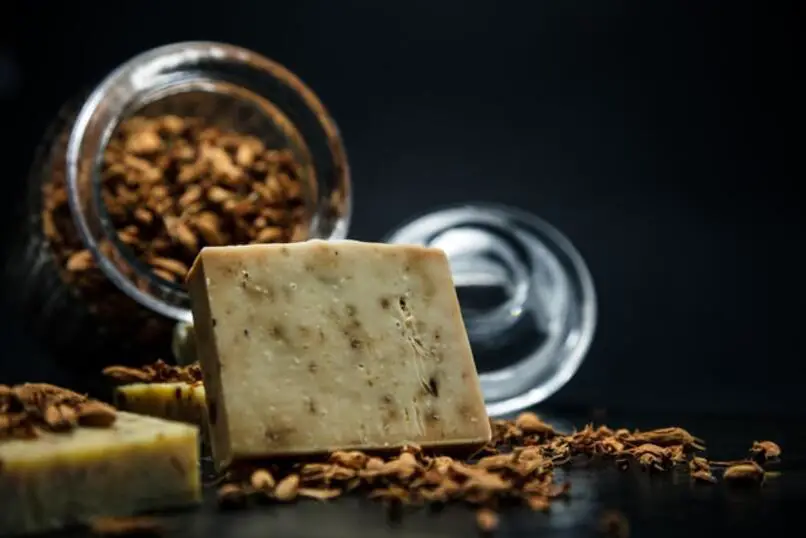For some time, natural cosmetics have taken on competition with the objective that from home products such as natural homemade soaps can be made that do not damage the skin with the chemical components that they usually bring.

Likewise, it is intended that you can help protect the environment by not using petroleum products, but with the active principles of natural products your skin feels much better, without causing allergies or side effects due to preservatives, synthetic flavors and artificial additives.
Advantages of making homemade soaps
- Free of chemicals, preservatives, colorings, additives and any component toxic to health that a regular soap could have in its composition.
- The presence of Glycerin in natural soap makes your skin always moisturized and does not dry out.
- As a treatment for acne, it is a good ally, since the vitamins and nutrients they have improve the dermis of the skin.
- Its aroma is natural, not artificial, so it is not unpleasant or strong.
- You can use it for any part of your body, since they keep your pH balanced.
Precautionary measures when making homemade soap
If you are convinced of making homemade soaps due to its great advantages, you should consider some precautions before making the soaps. Well, even if they are natural, you know that they will always touch our skin and we must do it in the best way.
First of all, you should keep children away, although it is a beautiful and recreational activity, there are many natural elements that ingesting them or touching the eye can cause irritation and intoxication, so keep them as far away as possible.
You must protect yourself with all the necessary implements, since mixing the soda can produce toxic gases or fire that burns, so do it in a ventilated place and use gloves, glasses, old clothing that covers everything or an apron.
Note: vinegar neutralizes soda keep it close.
Utensils needed to prepare homemade soap
- Glycerin stick and caustic soda.
- Knife, spatula, mixer, measuring spoons (preferably silicone or wood).
- Pans
- Clear cups or stainless steel containers for mixing.
- Colors and cosmetic fragrances, herbs, almond oil, bath salts, among others.
- Silicone or plastic soap molds.
- Spray Bottles
- Food thermometer.
- Kitchen scale.
- Transparent film paper.
- Vinegar.
- Newspaper for the work surface.
- Plastic glasses or face shield to protect your eyes and face.
- Mask or mouth cover.
- Robe or apron.
Measurements and proportions to make homemade and natural soaps
The measurements and proportions to make natural homemade soaps will depend on the type of soap you want to make, that is, its size, color, and aroma and with what natural ingredients.
Next, we will show you how to make the different types of soap.
With caustic soda
The caustic soda is the chemical basis for the manufacture of the detergent, is noninvasive skin when properly prepared on the soap, but in its original form can casuar burns if contact with the skin to be highly corrosive.
Carrot soap
The carrot as a component of a soap contains beta-carotene that acts as an antioxidant protecting the skin from the UV rays of the sun.
Ingredients
- ½ cup of caustic soda.
- ½ cup of coconut oil.
- ½ cup of almond oil.
- ½ cup of carrots, cooked in puree.
- 1 glass of the water that remains from cooking the carrots.
- ½ tablespoon of pure honey.
Process
- Cook the carrot in a pot until soft.
- Pour them into another cup and mash until pureed. Then add the glass of water from the carrots cooking and mix.
- Add the caustic soda carefully, constantly stirring the mixture gently.
- Let stand for 5 minutes
- Add the oils and honey, stir everything well until the consistency is increased.
- Place the mixture in silicone molds and cover with the film paper.
- Let them rest for at least two days.
Lavender soap
Lavender soap helps hydrate skin, relieve inflammation, regulate pH, and reduce acne.
Ingredients
- 1 cup of coconut oil
- ½ cup of almond oil.
- ½ cup of caustic soda.
- Fresh or dried lavender flowers.
- Lavender essence.
- 65 ml of distilled water.
Preparation
- In a container, place the water first and then the caustic soda and let it rest for a few minutes.
- In a pot, place the oils over low heat for a couple of minutes.
- Incorporate with the caustic soda while continuing to beat and add the essence of lavender.
- In the soap mold add some flowers, then the mixture and more lavender flowers, cover with the Film.
- Let them rest for at least two days.
With Aloe Vera
An Aloe Vera soap has the benefits of tissue regeneration, improves acne, restores collagen, reduces scars and gives a feeling of freshness.
Ingredients
- 3 branches of aloe Vera with the green skin previously removed.
- ½ cup of coconut oil.
- ½ cup of almond oil
- ½ grams of caustic soda.
- 200 grams of water.
Preparation
- In a container add the water and then the caustic soda and wait a few minutes.
- In a saucepan, heat the oil to 38º Celsius.
- Put the oil and soda in the blender and beat at maximum power until the consistency of gelatin is left.
- Add the Aloe Vera and beat for a few more seconds.
- Place the mixture in silicone molds and cover with the film paper.
- Let them rest for at least two days.
Rosemary soap
Rosemary soap has anti-inflammatory properties to soothe skin discomfort.
Ingredients
- 150 ml of water.
- 1 cup of dried rosemary.
- ¼ cup of caustic soda.
- 2 cups of olive oil or your preference.
- 1 glass of rosemary infusion.
Preparation
- In a container add the water and then the caustic soda and wait a few minutes.
- In a pot, bring water to boil and when it is already add two tablespoons of rosemary and turn off the heat and let it act for a few minutes and then strain the water to remove the rosemary seeds from the water.
- Add the rosemary infusion to the caustic soda, continuing to mix slowly.
- After the mixture cools, add the oils and continue beating, you can use the electric mixer on a low level until it reaches a creamy consistency.
- In the soap mold add a little rosemary, then the mixture and more rosemary, cover with the film paper.
- Let them rest for at least two days.
Rosehip
The rosehip as an active component in a soap significantly improves the appearance of skin and improves acne.
Ingredients
- 300 gr of demineralized water.
- ½ coconut oil.
- ½ almond or olive oil.
- 100 gr of rosehip oil.
- ½ Caustic soda.
Preparation
- In a container add the water and then the caustic soda and wait a few minutes
- In a pot, place the oils (except rosehip) and heat over low heat for a few minutes until reaching a temperature of about 40ºC, then add the mixture previously prepared with the caustic soda, while beating.
- When you have a homogeneous consistency, add the rosehip oil and beat another little bit.
- Place the mixture in silicone molds and cover with the film paper.
- Let them rest for at least two days.
Using used oil
Making soap with used cooking oil is preferably used for washing clothes or dishes.

Ingredients
- Half a liter of used cooking oil.
- Half a liter of water.
- 100 gr of caustic soda.
Preparation
- In a container add the water and then the caustic soda and wait a few minutes
- In a pot, place the oil on the fire until it reaches about 40 degrees
- Mix the two preparations and add an essence if you want.
Without adding caustic soda
Soaps that do not contain caustic soda are more natural and retain their additive properties more.
With saponaria and rosehip
The saponaria plant is a good replacement for caustic soda since its natural components facilitate the making of soaps and rosehip preserves its skin rejuvenating properties.
Ingredients
- 1 liter of water.
- 50 g of powdered saponaria root or branches.
- 100 ml of olive oil.
- 100 gr of rosehip oil.
Preparation
- In a pot, bring the water to a boil and when it is ready, turn off the heat and add the saponaria branches or the powder, let it rest for an hour.
- Strain to separate the branches from the water, and add the oils to the infusion, mix everything well until you get a homogeneous mixture.
- Place the mixture in silicone molds and cover with the film paper.
- Let them rest for at least two days in the refrigerator.
Orange and glycerin
Glycerin acts as a base in soaps since it is of natural origin and is not invasive for sensitive skin, on the contrary, it moisturizes and cleanses them.
Ingredients
- Glycerin base soap.
- Orange zest.
- Orange oil or essence.
Preparation
- Cut the glycerin into pieces to melt it in a water bath, but do not boil.
- When it is ready and a little cold add the orange zest and the oil or essence.
- Mix well until you get a homogeneous mixture.
- Place the mixture in silicone molds and cover with the film paper.
- Let them rest for at least two days.
Glycerin soap and essential oil
The essential oils have analgesic properties so calming or swelling.
Ingredients
- Glycerin base soap.
- Essential oils of your choice.
Process
- Cut the glycerin into pieces to melt it in a water bath, but do not boil.
- When it is ready and a little cold add the essential oil.
- Mix well until you get a homogeneous mixture.
- Place the mixture in silicone molds and cover with the film paper.
- Let them rest for at least two days.
Sulfur
Sulfur soap helps eliminate blackheads and acne, improving dermatitis.
Ingredients
- 25o gr. glycerin.
- 1 tablespoon of sulfur.
- 50 ml essential oil
Process
- Cut the glycerin into pieces to melt it in a water bath, but do not boil.
- When it is ready and a little cold add the essential oil and sulfur.
- Mix well until you get a homogeneous mixture without lumps.
- Place the mixture in silicone molds and cover with the film paper.
- Let them rest for at least two days.
Almond soap
Almond soap softens and hydrates the skin, soothing it if there is any irritation.

Ingredients
- 25o gr. glycerin.
- 1 tablespoon of powdered almonds.
- 50 ml of almond oil.
- Aromatic essence.
Process
- Cut the glycerin into pieces to melt it in a water bath, but do not boil.
- When it is ready and a little cold add the almond oil and the almond powder.
- Mix well until you get a homogeneous mixture without lumps, add the aromatic essence.
- Place the mixture in silicone molds and cover with the film paper.
- Let them rest for at least two days.
How to make homemade liquid soap
One of the advantages of liquid soap is that your skin does not come into contact with all the soap, if not only with the necessary to wash, thus avoiding the accumulation of the bacteria that we carry on our hands in the rest of the soap that is packaged.
With a bar of soap
Ingredients
- A bar soap.
- 1/2 liter of hot water.
- A dispenser container.
- Aromatic essence (optional).
Process
- Grate the soap.
- Bring the water to a boil.
- Add the hot water to the soap zest and stir until liquid.
- Add the essences.
With glycerin
Ingredients
- A bar soap.
- 3 cups of distilled water.
- 2 teaspoons of liquid glycerin.
- A dispenser container.
- Aromatic essence (optional).
Process
- Grate the soap.
- Bring the water to a boil.
- Add the hot water to the soap zest and stir until liquid.
- add the essences and glycerin.
Using fennel
Fennel oil in soaps has moisturizing properties, draining cellulite and circulatory problems.
Ingredients
- A bar soap.
- 3 cups of distilled water.
- 2 teaspoons of liquid glycerin.
- Fennel oil.
- A dispenser container.
- Aromatic essence (optional).
Process
- Grate the soap.
- Bring the water to a boil.
- Add the hot water to the soap zest and stir until liquid.
- Add the essences, glycerin and fennel oil.


















